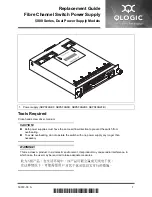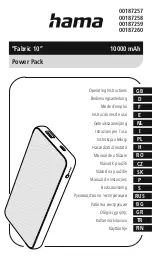
English |
13
Bosch Power Tools
1 609 92A 35E | (19.9.16)
Declaration of Conformity
We declare under our sole responsibility that the product de-
scribed under “Technical Data” is in conformity with all relevant
provisions of the directives 2011/65/EU, 2014/30/EU,
2006/42/EC including their amendments and complies with the
following standards: EN 60745-1, EN 60745-2-4, EN 50581.
Technical file (2006/42/EC) at:
Robert Bosch Power Tools GmbH, PT/ECS,
70538 Stuttgart, GERMANY
Robert Bosch Power Tools GmbH
70538 Stuttgart, GERMANY
Stuttgart, 01.01.2017
Assembly
Before any work on the machine itself, pull the mains
plug.
Dust/Chip Extraction
Dusts from materials such as lead-containing coatings,
some wood types, minerals and metal can be harmful to
one’s health. Touching or breathing-in the dusts can cause
allergic reactions and/or lead to respiratory infections of
the user or bystanders.
Certain dusts, such as oak or beech dust, are considered
as carcinogenic, especially in connection with wood-treat-
ment additives (chromate, wood preservative). Materials
containing asbestos may only be worked by specialists.
– Provide for good ventilation of the working place.
– It is recommended to wear a P2 filter-class respirator.
Observe the relevant regulations in your country for the mate-
rials to be worked.
Prevent dust accumulation at the workplace.
Dusts can
easily ignite.
Mounting the Auxiliary Handle (see figure A)
Operate your machine only with the auxiliary handle 3.
Screw the auxiliary handle
3
on the right or left of the machine
head depending on the working method.
Adjusting the Sanding Attachment (see figure B)
– Before adjusting the sanding attachment
10
, completely
release clamping lever
5
.
– Move the sanding attachment
10
accordingly to suit your
working conditions and working position.
– Close the clamping lever
5
and tighten it firmly.
Note:
Clamping lever
5
is indexed (adjustable), allowing it to
be set to an ergonomically favourable or space-saving posi-
tion.
With the clamping lever
5
tightened, pull its lever away from
the machine head, turn it to the desired position and allow it
to engage again.
Changing the Sanding Belt (see figure C)
– Loosen fastening screw
9
and remove the attachment cov-
er
8
.
– Press sanding attachment
10
via the supporting surface
14
against a sturdy object (e. g. a bench top) until the
sanding attachment
10
deflects. Remove the sanding belt
12
.
– Firstly, position the new sanding belt
12
around on the
drive roller
7
and then around the deflection roller
13
. Pay
attention that the arrow directions on the inside of the
sanding belt (if given) and on the attachment cover
8
of the
power tool correspond. Release the sanding attachment
10
again, so that the sanding belt
12
is tensioned.
– Mount the attachment cover
8
with fastening screw
9
.
– Adjust the belt run as required, see section “Adjusting the
Belt Run”.
Adjusting the Belt Run (see figure D)
Adjust the belt run only when the power tool is
switched off and disconnected from the power supply.
Turn adjustment screw
1
until the sanding belt
12
is posi-
tioned centred on deflection roller
13
.
Selecting the Sanding Belt
Depending on the material to be worked and the required rate
of removal, different sanding belts are available:
Note:
Depending on the application method and the material
being worked, either flexible of stiff sanding belts can be
used.
Changing the Sanding Arm (see figure E)
– Remove the sanding belt
12
(see section “Changing the
Sanding Belt”).
– Unscrew adjustment screw
1
and remove the sanding arm
16
.
– Mount the new sanding arm
16
and fasten it with adjust-
ment screw
1
.
– Pay attention that the sanding arm
16
is correctly mounted
according to figure E.
– Mount the sanding belt
12
(see section “Changing the
Sanding Belt”).
– Adjust the belt run (see section “Adjusting the Belt Run”).
Operation
Starting Operation
Observe correct mains voltage! The voltage of the pow-
er source must agree with the voltage specified on the
nameplate of the machine. Power tools marked with
230 V can also be operated with 220 V.
Henk Becker
Executive Vice President
Engineering
Helmut Heinzelmann
Head of Product Certification
PT/ECS
Grain size
For dry sanding and pre-sanding
coarse
40, 60
For structuring and for smoothing
out minor unevenness
medium
80, 120
For fine structuring
fine
180
Fleece belts
Polishing
Fleece belts
OBJ_BUCH-1841-004.book Page 13 Monday, September 19, 2016 9:38 AM














































